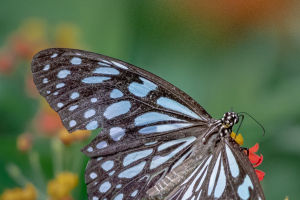As birds, parrots have a relatively long lifespan, generally 30-60 years, and can accompany humans for many years. Parrots are the longest-lived among birds, with cockatoos and Amazons living up to 75 years or more. Even budgies can live for 15-25 years, which is a very long lifespan for such a small animal.
The lifespan of a parrot is divided into two types: physiological lifespan and actual lifespan. Physiological lifespan refers to the number of years that a parrot can survive under the condition that all unfavorable conditions to the parrot are excluded. Actual lifespan refers to the lifespan of a parrot in real life, which is affected by many factors.
The world's longest-lived parrot is an Amazon parrot, which was born in 1870 and died in 1975, living a full 104 years, spanning a century. In fact, the average lifespan of Amazon parrots is also around 80 years old, so it is not very unusual to live to 104 years old. But so far, no parrot has lived longer than it!
The 104-year-old Amazon parrot, named "Jaime", lives in Liverpool, England, and has accompanied one owner to the end of his life. According to the average lifespan of birds, generally large parrots have a longer lifespan. In addition to the Amazon parrot, there is the kakapo, which lives at least 80 years and is the only flightless parrot in the world.
In real life, the lifespan of parrots raised by most farmers is generally reduced by half or one-third. This is because parrots reproduce for a long time, which affects the parrot's body and thus affects their lifespan. Improper feeding by the owner can also cause parrot death. For parrots, a clean environment and a reasonable diet are essential. As long as the owner can take good care of his parrots and there are no accidents, they can basically live for a long time.
How to raise parrots to make them live longer?
1. Regular feeding: Food is a source of nutrition for parrots. If you want them to live longer, you need to feed them every day. Owners can use millet as their main food and occasionally feed them some fruits and vegetables such as apples, bananas, cabbage, carrots to increase nutrition.
2. Keep warm: Most parrots are tropical birds and are more afraid of cold. Therefore, when raising, you should pay attention to adjusting the temperature to between 15-26 °C. In winter, pay attention to keep them warm and do not let them live in places where the temperature is lower than 15 ℃.
3. Pay attention to cleaning: When breeding parrots, pay attention to cleaning the bird cage regularly. Bird droppings and food residues in the cages should be cleaned regularly, and the bird cages should be disinfected regularly. Food and water should be changed every day, and food and water containers should be washed once a day. This keeps food and water clean and hygienic and prevents them from getting sick.


